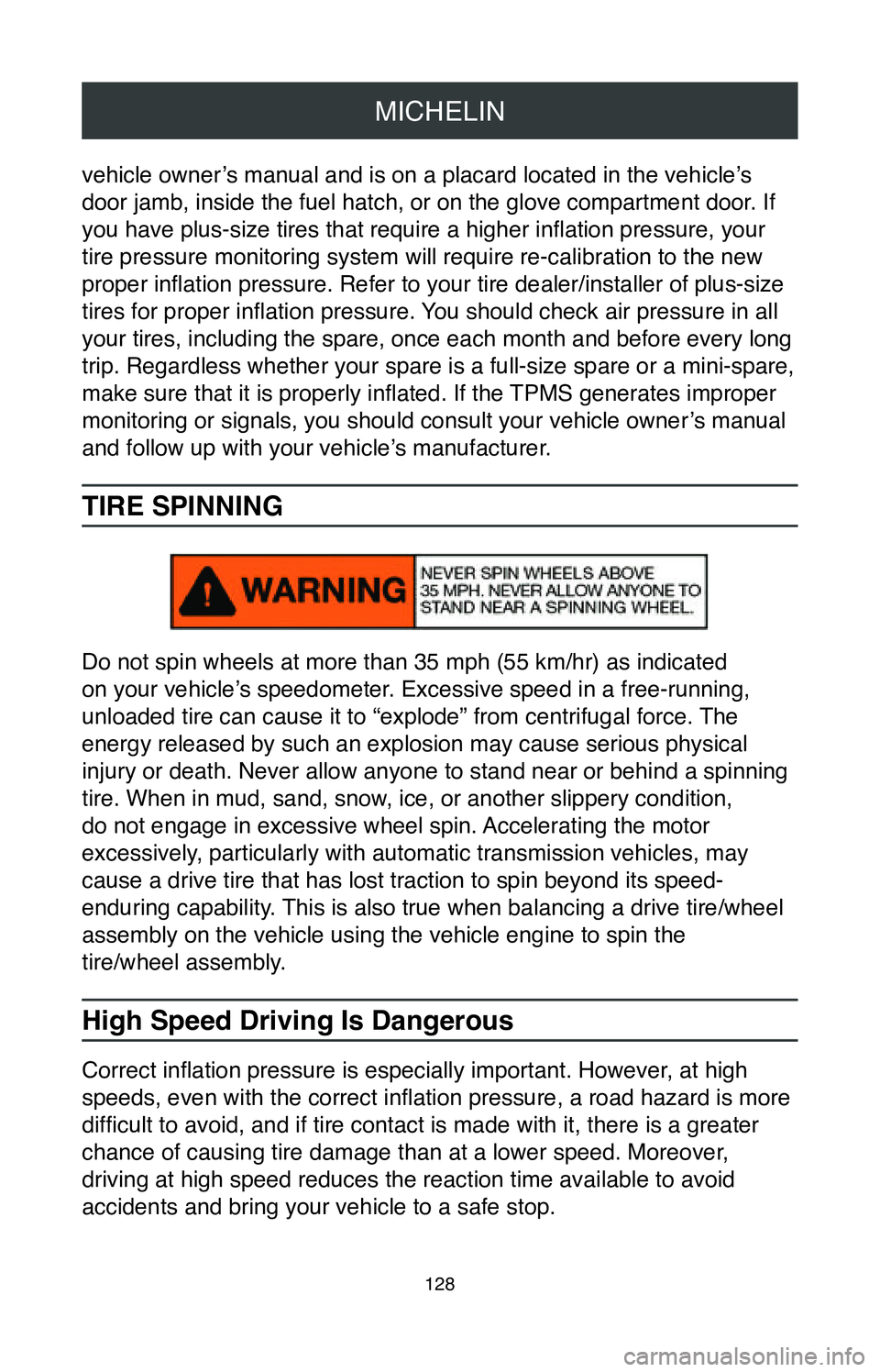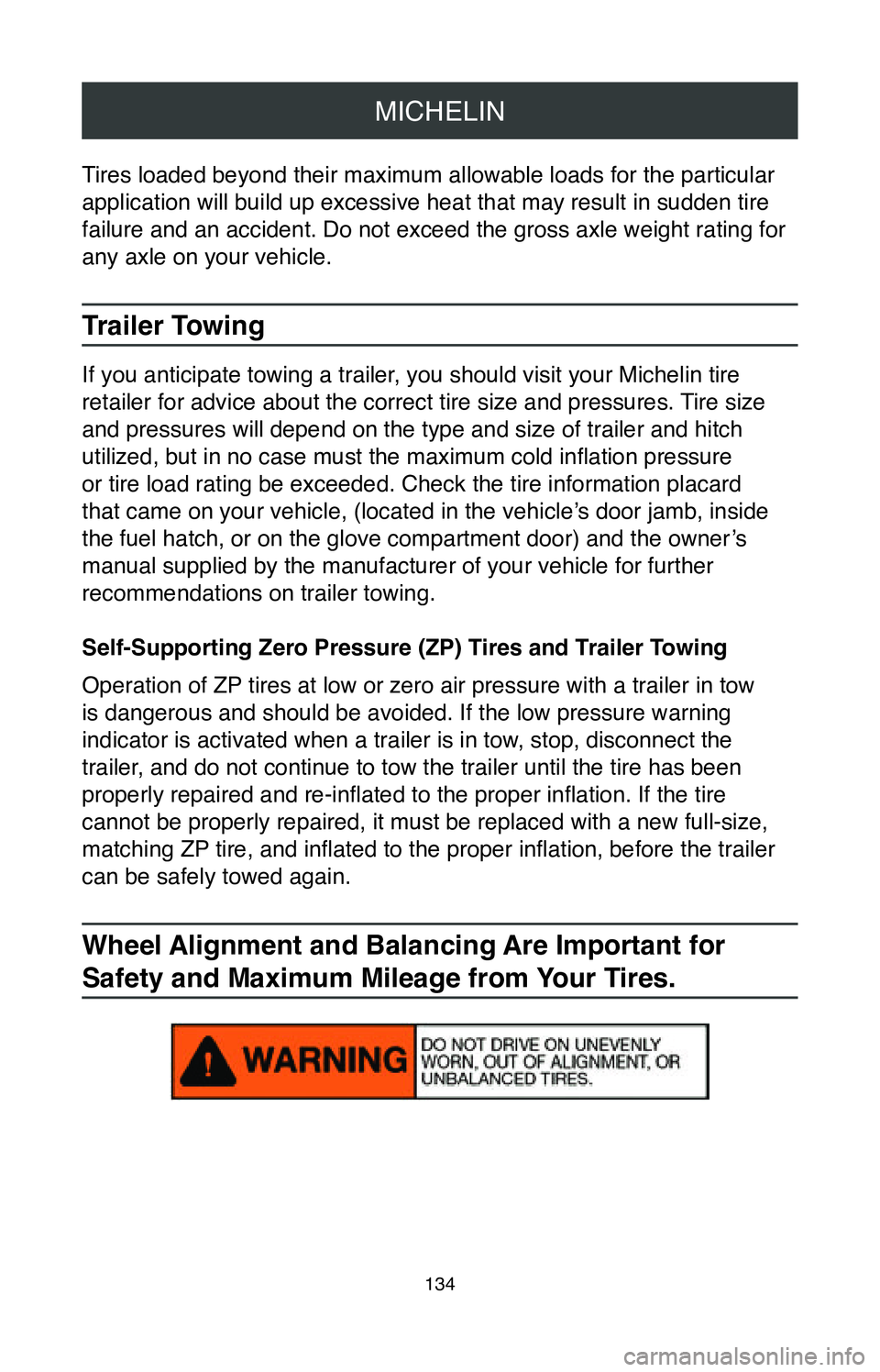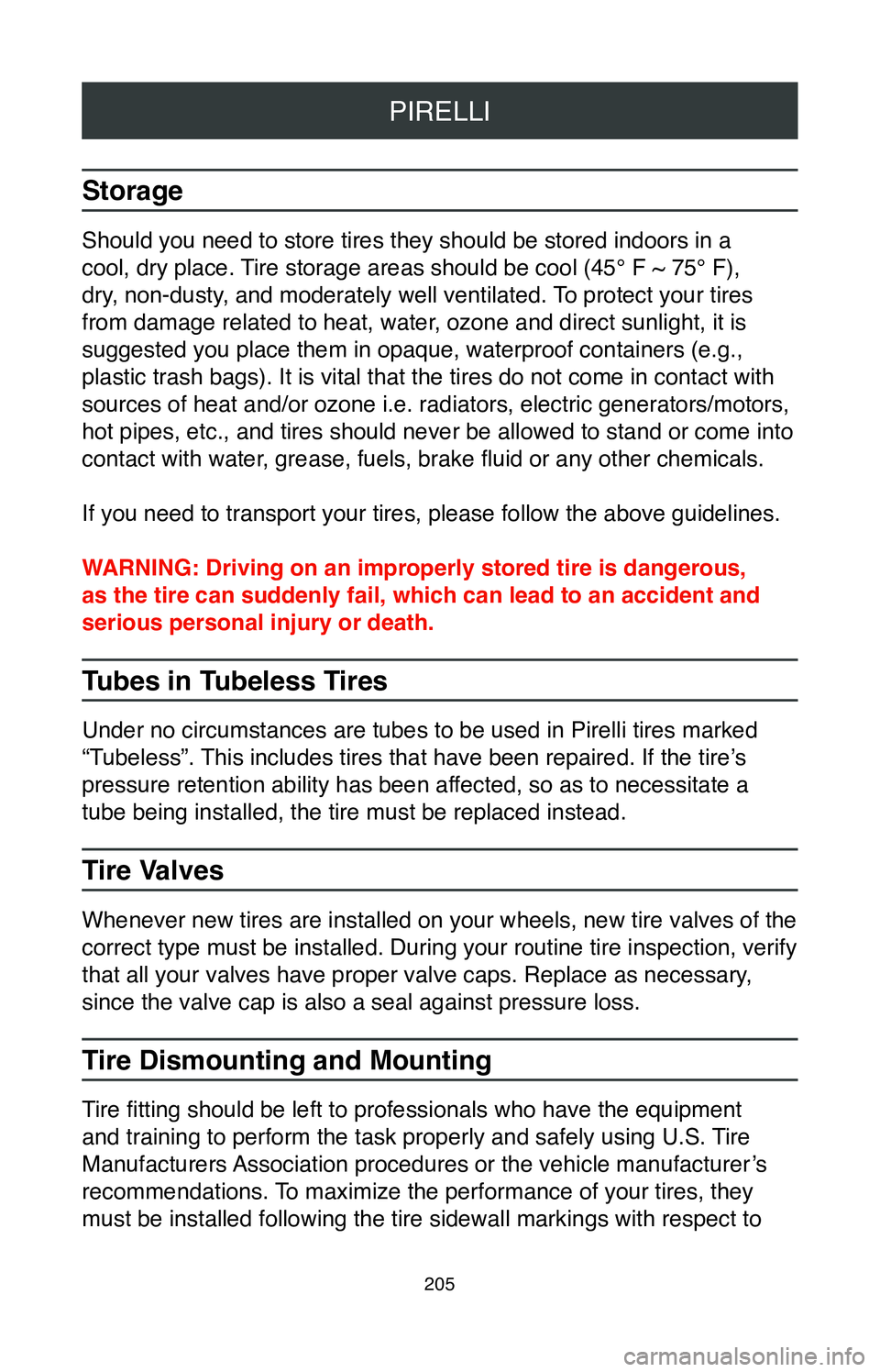fuel TOYOTA GT86 2020 Warranties & Maintenance Guides (in English)
[x] Cancel search | Manufacturer: TOYOTA, Model Year: 2020, Model line: GT86, Model: TOYOTA GT86 2020Pages: 260, PDF Size: 8.54 MB
Page 130 of 260

MICHELIN
128
vehicle owner’s manual and is on a placard located in the vehicle’s
door jamb, inside the fuel hatch, or on the glove compartment door. If
you have plus-size tires that require a higher inflation pressure, your
tire pressure monitoring system will require re-calibration to the new
proper inflation pressure. Refer to your tire dealer/installer of plus-size
tires for proper inflation pressure. You should check air pressure in all
your tires, including the spare, once each month and before every long
trip. Regardless whether your spare is a full-size spare or a mini-spare,
make sure that it is properly inflated. If the TPMS generates improper
monitoring or signals, you should consult your vehicle owner’s manual
and follow up with your vehicle’s manufacturer.
TIRE SPINNING
Do not spin wheels at more than 35 mph (55 km/hr) as indicated
on your vehicle’s speedometer. Excessive speed in a free-running,
unloaded tire can cause it to “explode” from centrifugal force. The
energy released by such an explosion may cause serious physical
injury or death. Never allow anyone to stand near or behind a spinning
tire. When in mud, sand, snow, ice, or another slippery condition,
do not engage in excessive wheel spin. Accelerating the motor
excessively, particularly with automatic transmission vehicles, may
cause a drive tire that has lost traction to spin beyond its speed-
enduring capability. This is also true when balancing a drive tire/wheel
assembly on the vehicle using the vehicle engine to spin the
tire/wheel assembly.
High Speed Driving Is Dangerous
Correct inflation pressure is especially important. However, at high
speeds, even with the correct inflation pressure, a road hazard is more
difficult to avoid, and if tire contact is made with it, there is a greater
chance of causing tire damage than at a lower speed. Moreover,
driving at high speed reduces the reaction time available to avoid
accidents and bring your vehicle to a safe stop.
Page 136 of 260

MICHELIN
134
Tires loaded beyond their maximum allowable loads for the particular
application will build up excessive heat that may result in sudden tire \
failure and an accident. Do not exceed the gross axle weight rating for \
any axle on your vehicle.
Trailer Towing
If you anticipate towing a trailer, you should visit your Michelin tire
retailer for advice about the correct tire size and pressures. Tire size
and pressures will depend on the type and size of trailer and hitch
utilized, but in no case must the maximum cold inflation pressure
or tire load rating be exceeded. Check the tire information placard
that came on your vehicle, (located in the vehicle’s door jamb, inside
the fuel hatch, or on the glove compartment door) and the owner’s
manual supplied by the manufacturer of your vehicle for further
recommendations on trailer towing.
Self-Supporting Zero Pressure (ZP) Tires and Trailer Towing
Operation of ZP tires at low or zero air pressure with a trailer in tow
is dangerous and should be avoided. If the low pressure warning
indicator is activated when a trailer is in tow, stop, disconnect the
trailer, and do not continue to tow the trailer until the tire has been
properly repaired and re-inflated to the proper inflation. If the tire
cannot be properly repaired, it must be replaced with a new full-size,
matching ZP tire, and inflated to the proper inflation, before the trailer
can be safely towed again.
Wheel Alignment and Balancing Are Important for
Safety and Maximum Mileage from Your Tires.
Page 207 of 260

PIRELLI
205
Storage
Should you need to store tires they should be stored indoors in a
cool, dry place. Tire storage areas should be cool (45° F ~ 75° F),
dry, non-dusty, and moderately well ventilated. To protect your tires
from damage related to heat, water, ozone and direct sunlight, it is
suggested you place them in opaque, waterproof containers (e.g.,
plastic trash bags). It is vital that the tires do not come in contact \
with
sources of heat and/or ozone i.e. radiators, electric generators/motors,\
hot pipes, etc., and tires should never be allowed to stand or come into\
contact with water, grease, fuels, brake fluid or any other chemicals.
If you need to transport your tires, please follow the above guidelines.\
WARNING: Driving on an improperly stored tire is dangerous,
as the tire can suddenly fail, which can lead to an accident and
serious personal injury or death.
Tubes in Tubeless Tires
Under no circumstances are tubes to be used in Pirelli tires marked
“Tubeless”. This includes tires that have been repaired. If the tire’s
pressure retention ability has been affected, so as to necessitate a
tube being installed, the tire must be replaced instead.
Tire Valves
Whenever new tires are installed on your wheels, new tire valves of the \
correct type must be installed. During your routine tire inspection, ver\
ify
that all your valves have proper valve caps. Replace as necessary,
since the valve cap is also a seal against pressure loss.
Tire Dismounting and Mounting
Tire fitting should be left to professionals who have the equipment
and training to perform the task properly and safely using U.S. Tire
Manufacturers Association procedures or the vehicle manufacturer’s
recommendations. To maximize the performance of your tires, they
must be installed following the tire sidewall markings with respect to